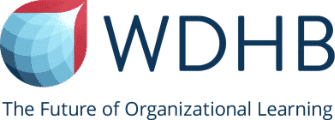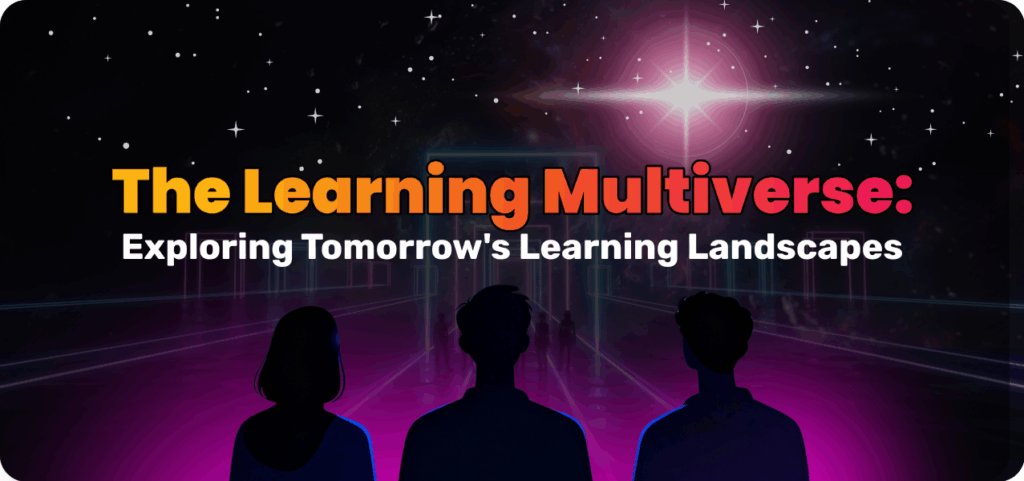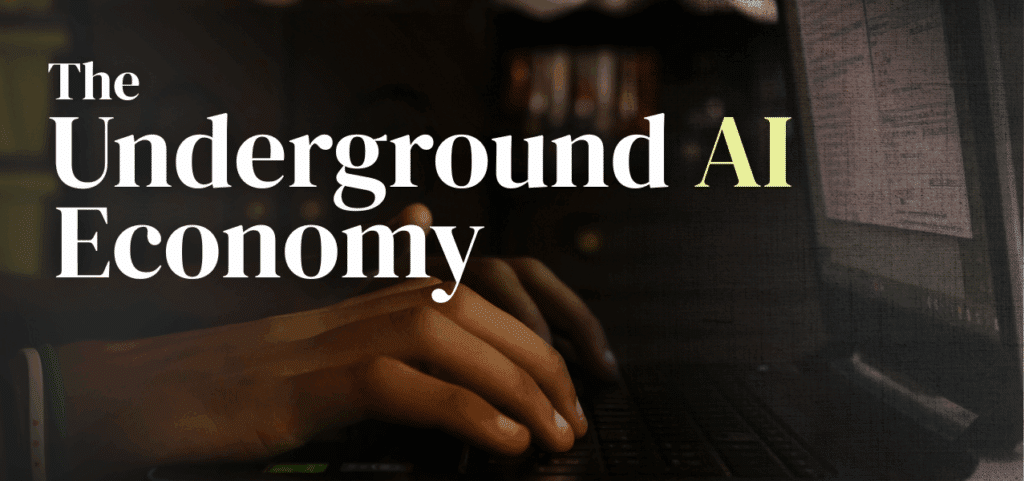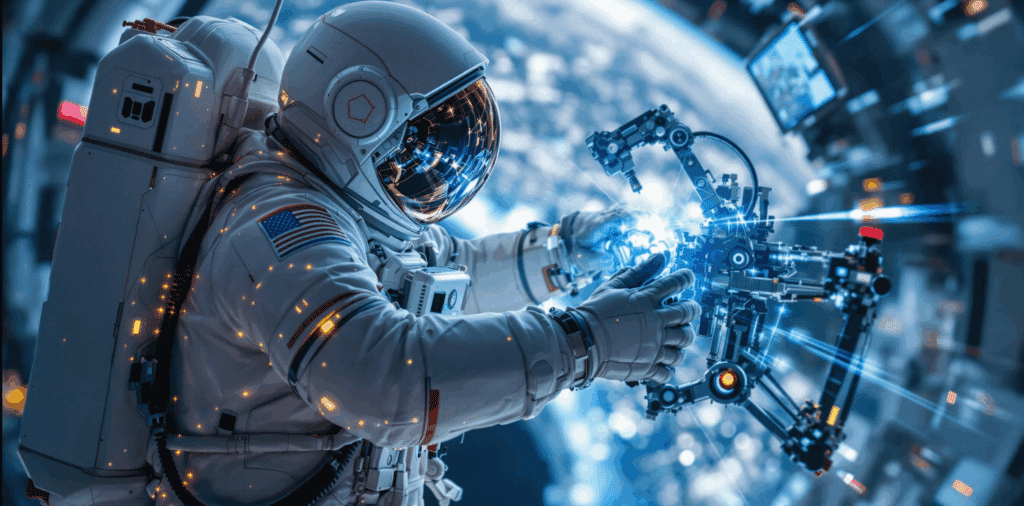The Post-Pandemic Dynamic: What’s Changed in L&D with Virtual Learning and AI Advancements?

The content of this article is a sample of our recent report, “The Future of L&D 2024.” To download the full report—featuring interviews with L&D leaders and research-fueled insights that will reshape the role of L&D professionals—please visit wdhb.com/wdhb-lab.
In an era marked by rapid technological advancements, shifting work dynamics and the aftermath of a global pandemic, simply being the most knowledgeable person in the room is no longer enough. New trends and workplace dynamics are a constant source of disruption, with no signs of slowing down. We believe these changes call for a full overview of the situation: How has L&D adapted to meet the challenges of the workplace today? How might the function evolve to meet emerging needs as they arise?
Let’s break down recent developments in L&D since the pandemic and the rise of AI, so that we might better navigate the world of today and tomorrow.
A digital tsunami:
According to a 2023 survey by McKinsey & Company, remote work adoption increased threefold during the pandemic, with around 20–25% of the global workforce working remotely multiple days a week. Prior to the pandemic, remote work was often viewed with skepticism by many organizations, but necessity forced a rapid pivot to remote work models, which are now widely considered to be a viable alternative to traditional office setups.
Organizations also found multiple advantages to this shift towards virtual training, as it allowed for quick, bite-sized learning nuggets available—in theory—at all times, anywhere and from any connected device. This allowed for a great match with the “attention economy” that defines current expectations of flexibility and immediacy for any type of content. Also worthy of note are the streamlining, scalability and cost-efficiency of such virtual training programs, which are a financial boon for L&D budgets. Organizations saved an average of $11,000 per employee per year by transitioning to digital learning programs (Deloitte, 2021).
However, virtual L&D programs are not limited to specific modules, whether comprehensive or bite-sized, designed to deliver technical content to reskill or upskill employees. More and more, companies are reimagining comprehensive learning programs to accommodate distributed teams and remote participants. For example, multinational corporations like Microsoft and Facebook are leveraging virtual reality (VR) technology to create immersive learning experiences that transcend geographical boundaries. Employees can participate in virtual team-building activities, interactive workshops and simulated scenarios from anywhere in the world, fostering collaboration and engagement in remote work environments.
That’s not all: employees’ evolving aspirations for flexibility and personalization have influenced the design of virtual learning programs. With a focus on tailored experiences and individualized learning paths, we increasingly leverage the new possibilities offered by AI to personalize learning. Companies are offering customizable learning journeys, self-paced modules and personalized coaching sessions to cater to diverse learner preferences and career aspirations. This is especially true for tech-savvy startups or established companies all over the world. They use technology to provide employees with curated learning resources, mentorship programs and project-based assignments, which support their professional development and growth in dynamic work environments.
Balancing human needs in digital landscapes
This new digital paradigm, however, also presents challenges for organizations and learners alike, even translating in a sort of pushback against digital formats from the learners’ perspective.
For many employees, the massive adoption of remote work has been both a blessing
and a challenge. Initially, working from home seemed like a dream—a break from the daily commute and office environment. However, as time passed, the limitations of this shift became apparent. Communication and collaboration suffered without the spontaneous interactions of an office setting. Additionally, adapting to new norms of digital communication while maintaining productivity and work-life balance became a challenge in itself. Technological barriers, such as access to reliable internet connectivity and digital devices, also posed significant hurdles for some employees and their organizations.
Additionally, maintaining learner engagement in virtual environments proved to be a persistent challenge, which is a major caveat for any successful L&D policy. For all of its merits, digital training lacks a fundamental aspect of human activities: the inherent need for human connection and in-person social interaction. Face-to-face bonding in the workplace fosters a sense of belonging, camaraderie and collaboration that is difficult to replicate in virtual environments.
For many individuals, a physical work environment provides a sense of community and belonging that contributes to their overall well-being and job satisfaction. A 2020 study published in the Journal of Organizational Behavior found that employees who feel a strong sense of belonging at work are more engaged, motivated, productive and innovative.
Trying to get the best of both worlds
As public health protocols allowed, organizations transitioned from full-remote work to hybrid models, extending this shift to Learning and Development. Hybrid learning combines virtual and in-person training, offering flexibility and efficiency while addressing social and aspirational needs.
The rise of hybrid work environments necessitates aligning corporate learning strategies with new workplace dynamics. L&D professionals face the challenge of fostering collaboration, communication, and skill development in distributed teams. Organizations like Cisco and Salesforce have developed hybrid training programs focusing on team-building, cross-functional collaboration and leadership development to support hybrid work settings.
However, many hybrid programs still lack focus on employees’ personal aspirations, which have shifted post-pandemic. Employees now prioritize holistic development, seeking learning experiences that align with their personal goals. Experiential learning plays a crucial role here, combining remote or hybrid learning with meaningful, life-long learning moments. This approach empowers learners to find personal meaning and achieve holistic development.
Spotify’s “Wellness Wednesdays” initiative exemplifies this trend, offering activities like mindfulness workshops and yoga classes to support mental health and work-life balance in a hybrid environment. This focus on well-being complements hybrid learning, creating a more comprehensive L&D strategy.

The Future of L&D
Discover post-pandemic workplace dynamics, AI’s impact on Learning & Development and how L&D can nurture learning communities.
Is AI really going to replace all of us?
AI’s ability to replicate cognitive functions is now a reality. Once exclusive to human intelligence, tasks such as recognizing patterns in images, text and videos are now handled by multilayer neural networks. AI’s applicability spans healthcare, transportation and conversational systems, making it a “general-purpose technology” poised to revolutionize every facet of life, including the nature of work. Given AI’s rapid advancements and growing capabilities, the fundamental question arises: will AI replace all of our jobs?
A seminal study by Frey and Osborne (2013) from Oxford suggested that nearly half of all jobs in the United States might disappear within two decades due to AI. However, this study focused on the technical potential for job displacement without accounting for cultural, organizational and size-related variations or the new job opportunities AI might generate. These uncertainties make estimating AI’s impact on job loss challenging.
A comprehensive study analyzing AI’s impact on jobs, segmented by sector and profession, would be immensely valuable. For roles centered on human interaction, such as Learning and Development professionals, AI is likely to serve as an enhancement rather than a replacement. Consequently, these professionals will need to update their skill sets to integrate AI tools effectively into their practices.
Humans are biased and flawed… so is AI?
AI systems are fundamentally shaped by the data on which they are trained, and because this data originates from human input, it can carry human prejudices, stereotypes and errors. For instance, when AI is applied to recruitment, it might perpetuate homogeneity by favoring candidates who fit a certain mold, inadvertently sidelining those with diverse or unconventional backgrounds.
L&D is witnessing a surge in AI adoption to craft individualized training programs. This personalization highlights AI’s potential to revolutionize L&D as a powerful tool for efficiency and impact. However, with this innovation comes a responsibility to scrutinize the human errors that could shape these learning pathways. Forward-thinking organizations recognize the urgent need to educate their teams about AI’s intricacies—its training processes, inherent biases and potential to discriminate. L&D professionals are poised to champion upskilling in AI literacy, ensuring their workforce understands how to identify and counteract prejudices within these systems.
While AI offers substantial benefits to L&D, its limitations must be recognized. L&D profes- sionals, as facilitators of human development, must master the creation, maintenance and enhancement of dynamic knowledge systems or expertly coordinate with third-party vendors. AI can bolster the efficiency of L&D initiatives, but the human element remains central to personal and professional development.
AI and the augmented human
The shift in how knowledge is curated, accessed, and applied is reshaping every organizational layer, from human resources to strategic operations. This change beckons us to envision a world of “augmented humans,” where AI enhances and magnifies human capabilities. For instance, AI in healthcare may outperform humans in diagnosing conditions, but human professionals remain indispensable for patient interaction, addressing unique concerns and guiding treatment decisions. In L&D, AI can serve as a powerful tool, but it cannot replace the nuanced understanding and personal touch that L&D professionals bring to their organizations.
An “augmented human” combines their intelligence with AI to improve decision-making, automate low-level cognitive tasks, and elevate their sense of agency. However, this evolution could come at a cost: cognitive exhaustion. Focusing solely on intensive cognitive tasks with high learning value invites the risk of cognitive burnout and the intensification of “quiet quitting” already observed in the post-COVID world.
Conclusion
The profound changes since the COVID-19 pandemic, the philosophical questions raised by AI and the evolving relationship people have with self-development are leading to a period of transformation for the L&D function. At WDHB, we believe it is time to challenge the status quo so that we might meet the moment and address shifting needs in the workplace. What will be our philosophy now and for the future as L&D professionals? What are our new mandates and positions in our organizations? By understanding L&D’s place in this revolution in the world of work, the L&D function has the opportunity to strategically prepare a resilient, connected and empowered workforce for the road ahead.
More than ever, we are at a pivotal moment that should lead us to adopt a new philosophy of work, particularly for the L&D function. We discuss the future mandate for L&D professionals in our full report, “The Future of L&D 2024.” Unlock these insights and more by downloading your complimentary copy at wdhb.com/wdhb-lab.
Author
Subscribe to get Access to Exclusive Content

